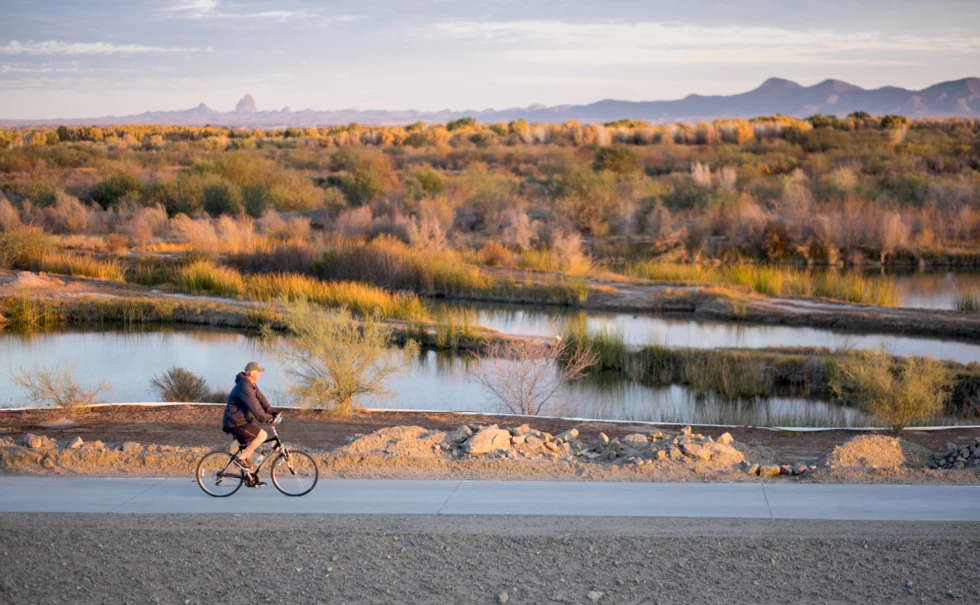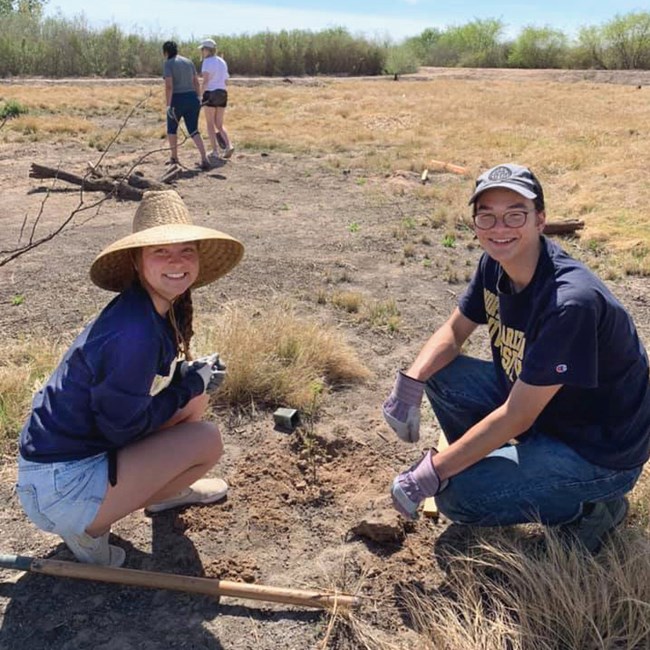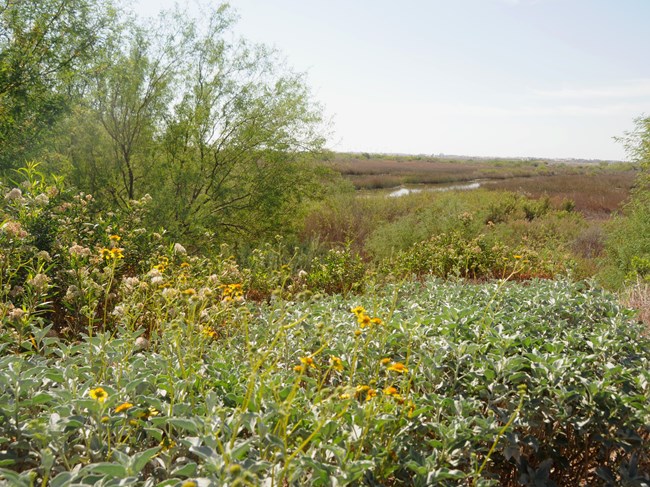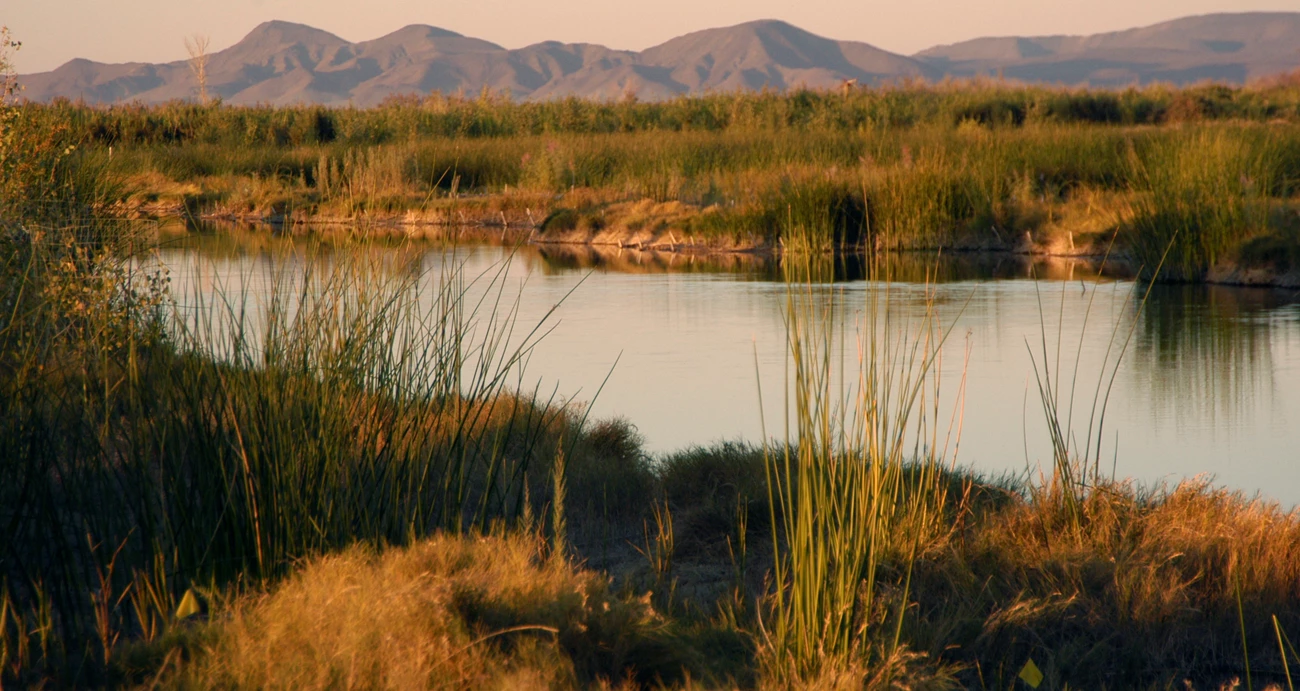Last updated: April 25, 2019
Article
NHA Restores Vital Wetlands in Yuma, AZ

YCNHA / Paige Lineberry
Yuma, AZ (April 25, 2019) – Yuma Crossing National Heritage Area (YCNHA) has completed a major wetlands conservation project to restore hundreds of acres of critical wetland habitat. In the process, they’ve also increased recreational opportunities for the local community and visitors alike.
Located in the Yuma Desert in Arizona, YCNHA contains over 1,500 acres of previous freshwater wetlands along the Colorado River. These wetlands provide critical habitat to native wildlife, including the endangered Ridgway’s rail (formerly known as the Yuma clapper rail) and yellow-billed cuckoo. Over the years, construction of dams upriver had drastic effects on the local environment. Dams prevented natural flow of the river, resulting in lower water levels and long-term degradation of the ecosystem. Along the Yuma’s riverfront, invasive, dense vegetation took over, pushing out native species and forming a physical barrier between city and the river.

YCNHA / Vianey Avila
Since 2001, YCNHA has coordinated the restoration of two of Yuma’s wetlands: the East Wetlands and the West Wetlands. This has been a monumental effort, with hundreds of volunteers contributing thousands of hours of labor.
The Yuma East Wetlands consists of nearly 500 acres of wetlands owned by the City of Yuma, the Quechan Indian Tribe, and Arizona Game and Fish Department. YCNHA brought all stakeholders together to coordinate the restoration of marshland habitat and create trails for low-impact recreation along the river. This spring, YCNHA remediated seven acres burned in a May 2018 fire. The fire destroyed a grove of mature mesquite trees, but there was a bright side: the flames cleared out the phragmites, an invasive species that is difficult to remove. YCNHA removed the debris from the fire, replanted mesquite trees, and restored the native marsh vegetation.
The Yuma West Wetlands was formerly the city landfill, but it has been transformed into Yuma’s most popular park. The Upper Bench is a community gathering spot complete with playgrounds and multi-use pathways. YCNHA has led the development of the Lower Bench by building trails, constructing a beach, and restoring 28 acres of wetland as a conservation area.

YCNHA Photo
In addition to the increased number of Yuma residents enjoying the parks, there are already clear signs that the restoration of the wetlands is providing an environmental benefit: in August 2018, a yellow-billed cuckoo and its nest was discovered in the East Wetlands, the first time that threatened species has been reported breeding in the area.
The major restoration projects may have been completed, but YCNHA’s work isn’t over. YCNHA will continue to coordinate volunteer groups to clear brush and maintain the wetlands. Ongoing maintenance is critical to prevent fast-growing invasive plants from returning. They also have plans to improve currently existing trails, create a nature viewing area in the East Wetlands, and add amenities such as restrooms to the Lower Bench of the West Wetlands.

YCNHA Photo
Discover more news and stories from America's National Heritage Areas.
